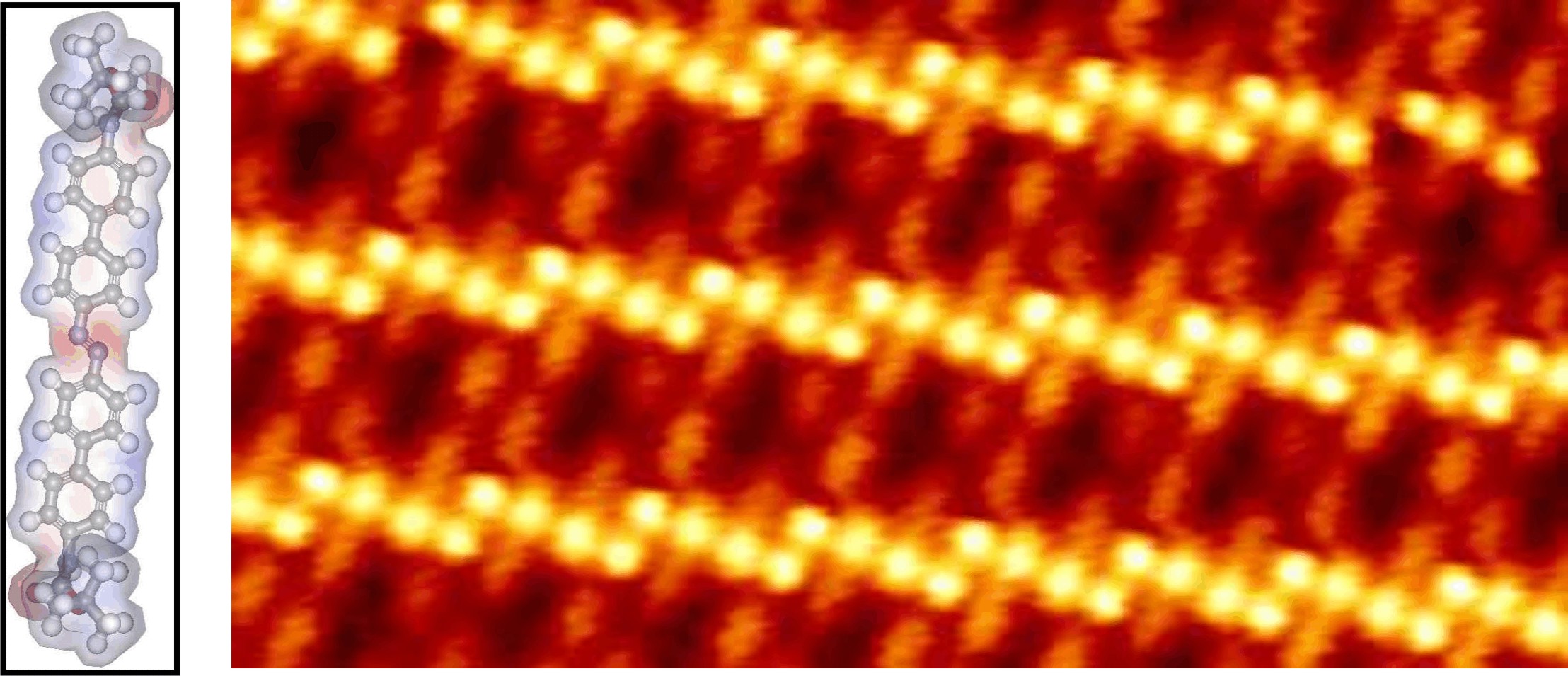Self assembly by protection group chemistry
Protection groups are widely used to distinguish reactivities of functional groups in synthetic chemistry. In our work, we used them as intermolecular organizers for the formation of well-organized molecular patterns. We studied the self-assembly of tert.butoxycarbonyl (BOC) protected 4,4’-diaminophenyl molecules on both Cu(111) and Ag(111) surfaces. On Cu (111), it self assembles into two different but similar ordered structures (parallel and herringbone arrangements) at room temperature (figure1). Upon annealing the sample at 196°C, a new periodic molecular pattern emerges consisting of covalently linked structures (figure 2). When the sample is further annealed at 198°C, more complex structures (macromolecules) are formed mainly consisting of long chains and cross-like structures (figure 3). As on Cu (111), on Ag (111) the molecules assemble again into a herringbone pattern (figure 4). After annealing the sample at 200°C, we observed long chains formed after releasing of the protection groups and the connection of the remaining monomers by the covalent bonds (figure 5) as happens on Cu (111). |
||||||
|
Figure 1. The STM images display the parallel (7 x 7 nm2, 77 K) and the herringbone arrangement (7 x 7 nm2, RT) of 1 on Cu(111), respectively. Four molecules and the unit cell have been drawn in each STM image to illustrate their arrangement. |
Figure 2. STM image (14 x 7 nm2, RT) of the dimers formed after annealing the sample at 196°C. Each monomer looses only one BOC group and two of them link up to a dimer. |
Figure 3. STM image (15 x 15 nm2, RT) of 1 after annealing at 198°C. Cross-like structures (blue arrow) and long chains (green arrow) surrounded by a mobile phase are visible. |
|
||
|
Figure 4: STM image (5.2 x 4.8 nm2, RT) of 1 on Ag (111). The molecules assemble in a herringbone arrangement. |
 |
Figure 5. STM images of 1 on Ag (111) annealed at 200°C. Both images show the same area on the surface. Since the tip conditions were different during acquiring the images, in a) the tert-butyl groups are mainly imaged (15 ´ 15 nm2, RT) while in b) primarily the π-system is observed (15 x 15 nm2, RT). |




